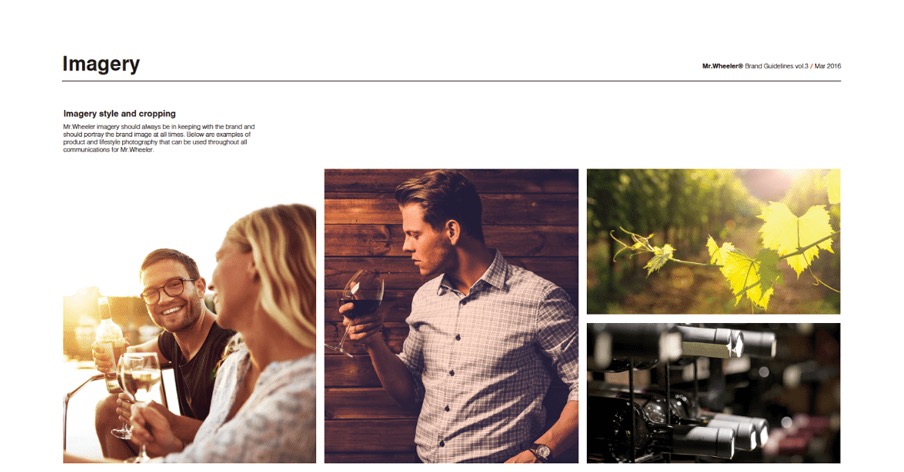Have you noticed that your favourite brands always put out consistent messaging that’s so familiar and easy to absorb? Think of Apple, McDonalds or Netflix. When you see or hear something from these brands, you don’t need to see their name or logo to know its them. You feel it in everything. This is what a brand style guide can ultimately do for your brand. Create recognizable consistency.
This isn’t easy, especially for larger brands; everyone needs to be on the same page and agree on some fundamental principles and ideas. That’s where a brand style guide can work its magic. It also makes it easy to work with others, such as marketing agencies, leaving nothing lost in translation.
Today, I am going to share first-hand, the steps we use ourselves when we work with brands to create strong and coherent brand style guides. But first…
What Exactly is a Brand Style Guide?
It is a set of written and illustrated rules that must always be followed when creating any kind of marketing communication. A brand style guide, brand book or brand guideline, will clearly, logically and coherently lay out guidelines for all components of marketing communications; including rules for using visuals and imagery, colour palettes, typography and the overall style, voice and design principles to be followed for every conceivable type of content. Creative expression must then manifest itself within the framework of these rules. Think of it like a country’s constitution, but for a brand’s marketing communications.
Creating Your Own Brand Style Guide
When putting yours together, always try to adopt a cohesive multiplatform, multichannel, integrated approach. While often overlooked, this is super important as marketing communications today are spoilt for choice when it comes to platforms, channels and mediums; particularly on digital. This leaves room for inconsistencies to easily make an appearance. So, plan for all platforms you’ll use.
Here are the most important areas to cover:
1 Your Brand Story
The story you tell about your brand describes the things you care about the most, as a brand. This story is used to communicate your values to the public and even guide important decision making within your organization. The brand story is tied deeply with the brand/company’s vision, mission and values. You can be creative or straightforward. The options are limitless. Checkout these examples; Facebook presents it simply and without flourish but then Skype takes a more playful approach.
2 Your Logo
Your logo is the visible face of your brand. It’s what customers will use to identify you. To be instantly recognizable, it must appear consistently whenever it is used. That means no variations in colours, size, fonts, style or anything else. Think of Facebook, Twitter or McDonalds. It’s always the same logo, clearly visible.
Along with this, other parameters with regard to layout and how and where the logo can appear are critical. These parameters include logo variations, colour variations, spacing, the smallest size that can be used while still being legible on print/digital media and examples of placement and how the logo may be used. This ensures that your logo always appears consistently; the importance of which can never be overstated in terms of how effective it is in creating instant recognition among your target audience.
3 Colour Palette

People are way more sensitive to colour than you think and will easily pick up when something is “not right”. This is why it is crucial to lay down rules about colour. These include Primary Brand Colours, Secondary Brand Colours, RGB (web) Colours, CMYK (print) Colours and any other colour parameters specific to your brand. This also prevents the use of colours that may not suit the brand personality.
If you take Facebook, Netflix or Apple, their colours are consistent across the board. This consistency provides a sense of familiarity and comfort to customers. Brands can be creative when using colour as long as consistency is maintained.
When it comes to colour, it’s important to provide as many examples as possible so that there is no confusion. Include core brand colours along with hex codes, RGB values and even shade variations, if necessary. It is also a very good idea to include plenty of examples of use cases and dos and don’ts.
4 Fonts & Typography
Choosing a font style and typography style that resonates with your brand personality and voice is very important. Creating guidelines about how these fonts and styles should be used is crucial so that all your communications look familiar. You should outline which fonts can be used, sizes, styling and how and on which medium (print/digital/electronic) each may be used.
Depending on your brand’s requirements you can go into great detail in this section or provide general guidelines and give more freedom for your designers. This will depend on the nature of your business.
The most important things to cover include Heading Fonts, Body Fonts and Web Friendly Fonts.
5 Imagery & Visual Elements

The imagery and visuals used in your marketing communications work to create the public’s perception of your brand. Thus, this is an important area to cover. You’ll need to create guidelines covering photos, illustrations, charts, infographics, icons and any other kind of imagery or visual elements that will be frequently used. It is important to include plenty of examples and dos and don’ts. Lay out rules about photographic styles as well as illustrative styles; such as natural, historical, cultural, light, airy, sophisticated or whatever other styles fit with your brand.
6 Visual Guidelines
Apart from the general imagery and visual elements used in marketing communications, your brand will use visuals for various other purposes. These include TVC frames, merchandising, outdoor material, stationary and social media (Facebook, Instagram, LinkedIn etc…). To maintain a consistent theme and style, it is best to lay down individual guidelines for each of these things, as the parameters will often vary from what is generally laid out for marketing communications. This section can extend to other areas too, depending on the nature of your business, such as showroom/branch décor and lay out guidelines etc… For example, how supermarkets of a particular chain tend to have a similar layout, or McDonald’s outlets tend to have a familiar set-up.
7 Brand Voice
Your brand voice is the tone and style that written or recorded communications convey. This will be rooted in your values and brand personality. Areas to cover include Tone of Voice, Types of Jargon that may or should be commonly used and the Style of Writing.
For example, how you address customers in writing should be covered; “Hi”, “Dear” and “Hello” all convey a different personality. When it comes to blogposts, articles and all other communications, guidelines should be laid down for writing and voicing styles. Again, examples and dos and don’ts go a long way. Can you use contractions nor not? How simple or complex should the lingo be? What are the buzz words and keywords? There’s a lot to think about here.
8 Sentence, Paragraph and Caption Length for Social Media
This is also related to brand voice but deserves special mention as it is often overlooked. Today, social media is likely to be the primary platform through which you will communicate with your customers. Therefore, consistency and form matter. Outline how long sentences should be, along with paragraph and caption lengths for visual posts. This all ties in with the overall style and voice you seek to portray. You may also want to adopt style variations for each platform. All this should be clearly laid out.
9 Use of Emojis on Social Media

Emojis may or may not work for your brand. If they don’t, specify that. If they do, specify how they will be used on social media. Again, this too relates to brand voice. For example, a more youthful and fun brand can use plenty of emojis, but a more mature, serious brand will look foolish doing so. Clearly outline how they will be used and which ones can and cannot be used.
10 Calls to Action (CTAs)
A call to action at the end of your posts and other communications can be very effective at eliciting the appropriate response from your customers; click a link, make a purchase etc… However, when overused or used incorrectly they can have the opposite effect. Also, establishing a consistent way of calling people to action adds to the overall brand consistency. Think about which kinds of action words will be used and, if you have any preferred style of addressing a call to action, lay this all out clearly. It is also important to define where CTAs can or should be used.
11 Hashtags on Social Media
Hashtags help to draw attention to your posts when used appropriately. They can help your posts to gain traction either when people search for or follow certain hashtags or when a certain hashtag begins trending. Define what hashtags you will use. How you will use them and where they will appear. No one likes seeing an entire paragraph of hashtags at the bottom of a post. Or a post with so many hashtags in the paragraph that it makes it unreadable.
12. Use of Interactive Features on Social Media
Questions, polls and other interactive features on social media are great tools brands can use to connect with their audience and gain traction. It gives a sense of a personal touch and makes customers feel that their favourite brands care. However, overused and used inappropriately, these interactive features can negatively impact the public perception of your brand. That’s why you should define clearly how, what, where and when they may be used.
Final Tips
Be generous when providing examples of correct and incorrect use cases and lists of dos and don’ts. These not only provide clarity for all but also help to prevent your brand from getting into sticky situations. You can go into as much detail or as little detail as you personally feel is required for your particular brand. However, it is often best to strike that delicate balance that creates consistency but without stifling creativity. If it is your first time, follow this guide and get the basics right. You can always update it as you go along.
What do you think of brand guidelines? What has your experience been? Would you like to create one for your brand? Share your thoughts in the comments below!
About the author

Wasaam has 15 years of experience that comprises Business Strategy, Marketing & Management. He has worked with clients in multiple industries including but not limited to Finance, FMCG, Retail, Telecom & Hospitality.
Apart from his daily involvement in managing the operations as CEO of Loops, he is also a Senior Lecturer for the Sri Lanka Institute of Marketing, a Corporate Trainer, Dramatist, and Voicing Artist.
He holds a Professional Postgraduate Diploma in Marketing from the Chartered Institute of Marketing (UK), in which he holds a Sri Lanka Prize for Marketing Planning. He also has a Masters in Business Administration (AUS). His guidance to the teams at Loops has helped the agency gain recognition for several awards for Creative and Digital excellence.
